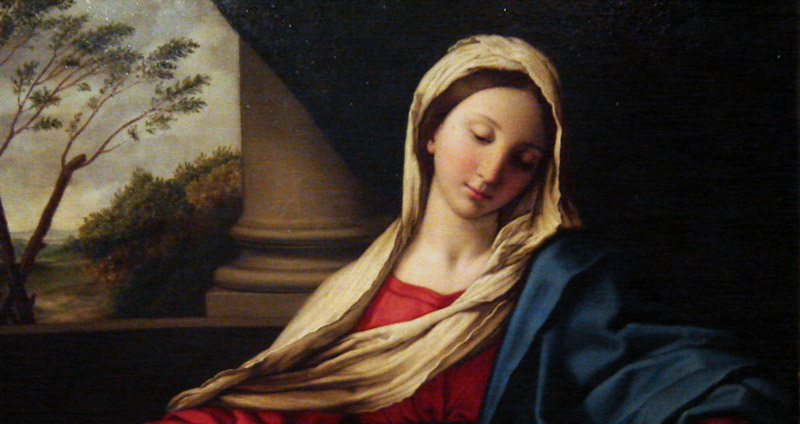“As her earthly life comes to an end, the Assumption helps us to understand more fully not just her life, but it helps us to always focus our gaze to Eternity,” said EWTN Senior Contributor Dr. Matthew Bunson.
“We see in Mary the logic of the Assumption as the culmination of Mary’s life,” he continued. “A Eucharistic requirement for that day is very fitting.”
The dogma of the Assumption of Mary — also called the “Dormition of Mary” in the Eastern Churches — has its roots in the early centuries of the Church. The Catholic Church teaches that when Mary ended her earthly life, God assumed her, body and soul into heaven.
This belief traces its roots back to the earliest years of the Church. While a site outside of Jerusalem was recognized as the tomb of Mary, the earliest Christians maintained that “no one was there,” Bunson said.
According to St. John of Damascus, in the fifth century, at the Council of Chalcedon in 451, Roman Emperor Marcian requested the body of Mary, Mother of God. St. Juvenal, who was Bishop of Jerusalem replied “that Mary died in the presence of all the Apostles, but that her tomb, when opened upon the request of St. Thomas, was found empty; wherefrom the Apostles concluded that the body was taken up to heaven,” the saint recorded.
By the 1700s, around the time of Pope Adrian, the Church began to change its terminology, renaming the feast day of the Memorial of Mary to the Assumption of Mary, Bunson noted.
The belief in the Assumption of Mary was a widely-held tradition, and a frequent meditation in the writings of saints throughout the centuries. However it was not defined officially until the past century. In 1950, Pope Pius XII made an infallible, ex-cathedra statement in the Apostolic Constitution Munificentissimus Deus officially defining the dogma of the Assumption.
“By the authority of our Lord Jesus Christ, of the Blessed Apostles Peter and Paul, and by our own authority, we pronounce, declare, and define it to be a divinely revealed dogma: that the Immaculate Mother of God, the ever Virgin Mary, having completed the course of her earthly life, was assumed body and soul into heavenly glory,” the pope wrote.
Within the decree, which was passed beforehand to dioceses around the world, Pope Pius XII surveys centuries of Christian thought and the writings of a number of saints on the Assumption of Mary.
“We have throughout the history of the Church an almost universal attestation of this,” Bunson said of the Christian tradition’s testimony to Mary’s Assumption.
“We have this thread that runs throughout the whole of the history of the Church in support of the dogma. That’s significant because it supports the tradition of the Church, but it also supports a coming to a deeper understanding of the teachings of the Church of how we rely upon the reflections of some of the greatest minds of our Church.”
What’s also notable about the dogma, he added, is that it “uses the passive tense,” emphasizing that Mary did not ascend into heaven on her own power, as Christ did, but was raised into heaven by God’s grace.
Today, the Feast of the Assumption is marked as a major feast day and a public holiday in many countries. In most countries, including the United States, it is a Holy Day of Obligation, and Catholics are required to attend Mass. Dr. Bunson explained that on important feast days, it’s important to mark the significance of the feast as especially vital by emphasizing the necessity of celebrating the Eucharist that day.
“What is more fitting than on the Assumption of the Blessed Mother to, once again, focus on her Son, on the Eucharist?” he reflected.
By Adelaide Mena/
Photo credit: Zvonimir Atletic/Shutterstock: Assumption of the Virgin Mary, fresco painting in San Petronio Basilica in Bologna, Italy.



